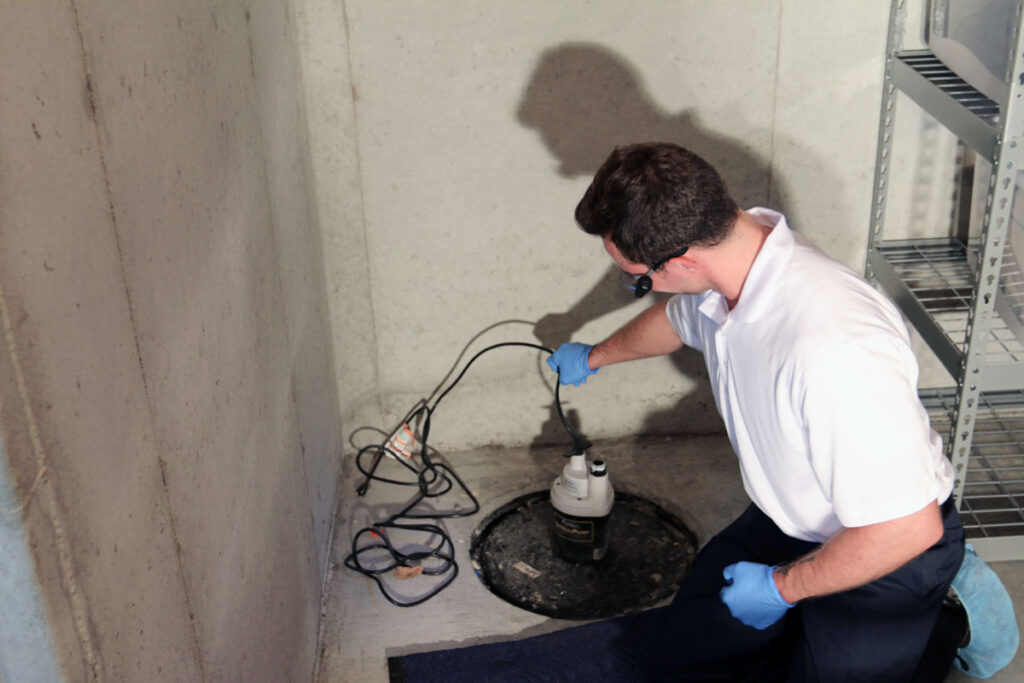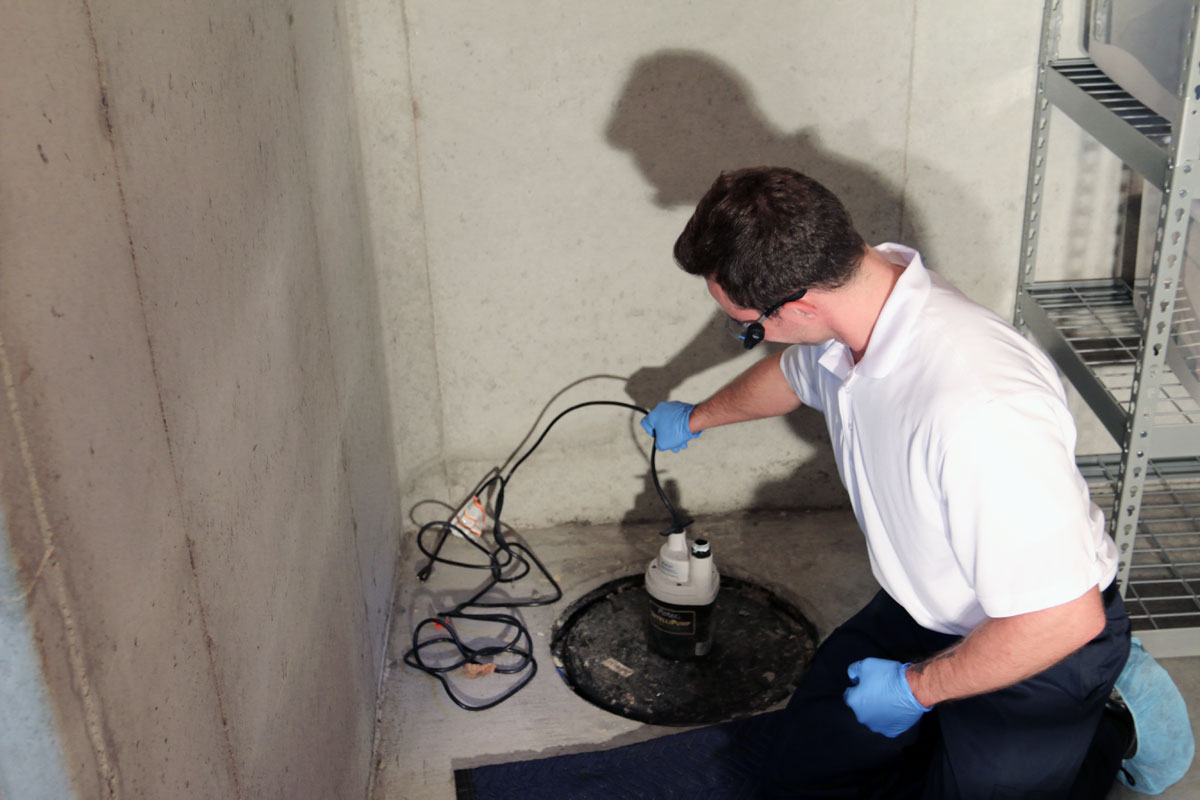
Sump Pump Sizing Guide: A Homeowner’s Essential Guide to Flood Prevention
Flooding is a homeowner’s worst nightmare. The devastation it leaves behind – from damaged belongings to structural compromise – is both emotionally and financially draining. While many factors contribute to a flooded home, groundwater intrusion is a significant culprit, particularly in areas with high water tables or heavy rainfall. This is where a sump pump becomes your frontline defense. But simply owning a sump pump isn’t enough; proper sizing is paramount to its effectiveness. This comprehensive sump pump sizing guide will equip you with the knowledge to select the right pump for your home, ensuring its ability to handle the water that threatens your foundation and your peace of mind.
This guide delves into the critical aspects of sump pump sizing, covering everything from understanding your home’s specific needs to the practical steps of calculating the required pumping capacity. We’ll explore the factors that influence water accumulation, the different types of sump pumps, and the importance of choosing the right size to avoid both underperformance and unnecessary expenses. Consider this your definitive resource for safeguarding your home against the costly and stressful consequences of flooding.
Understanding the Role of a Sump Pump
Before diving into sump pump sizing, it’s crucial to grasp the fundamental role of a sump pump. Essentially, a sump pump is a submersible pump installed in a sump pit, a hole typically located in your basement or crawl space. Its primary function is to remove water that accumulates around your foundation. This water can stem from various sources, including:
- Groundwater: Water seeping into the soil surrounding your foundation, especially prevalent after heavy rain or snowmelt.
- Surface Runoff: Water flowing from the surface, such as rain or melting snow, that finds its way near your foundation.
- Leaking Pipes: In some cases, a sump pump can help manage water from burst or leaking pipes, though this is not its primary function.
The sump pump detects rising water levels in the pit and automatically activates, pumping the water away from your foundation and directing it to a safe discharge point, usually a drainage system or a designated area away from your house. By effectively removing this water, a sump pump prevents hydrostatic pressure from building up against your foundation walls, reducing the risk of cracks, leaks, and, ultimately, flooding. A properly sized sump pump is the key to ensuring it performs this critical function effectively.
Key Factors Influencing Sump Pump Sizing
Determining the correct sump pump sizing isn’t a one-size-fits-all process. Several factors influence the amount of water your sump pump will need to handle. Accurately assessing these factors is essential for selecting a pump that can effectively protect your home. Here are the most important considerations:
Average Rainfall and Groundwater Levels
The amount of rainfall your area receives is a primary determinant of how much water your sump pump will need to manage. Regions with high precipitation and frequent storms naturally experience greater water accumulation around foundations. Similarly, areas with high groundwater tables, where the water level is close to the surface, are more susceptible to water intrusion. Researching average rainfall patterns and understanding the typical groundwater levels in your area is a crucial first step in the sump pump sizing process.
Soil Type and Drainage
The type of soil surrounding your foundation significantly impacts water drainage. Clay-rich soils, for example, drain water much slower than sandy soils. This means that in areas with clay soil, water is likely to accumulate around your foundation for longer periods, requiring a sump pump with a higher pumping capacity. Poor drainage around your foundation, regardless of soil type, will also exacerbate water accumulation. Inspecting your property’s drainage and soil composition is vital for accurate sump pump sizing.
Foundation Construction and Size
The size and construction of your foundation play a role in water accumulation. Larger foundations, naturally, have a larger surface area exposed to groundwater. The materials used in your foundation’s construction can also influence water infiltration. For instance, foundations with cracks or poor waterproofing are more vulnerable to water intrusion. Consider the dimensions and condition of your foundation when determining the appropriate sump pump sizing.
Sump Pit Size and Capacity
The size of your sump pit is a critical factor. A larger pit allows the pump to collect more water before activating, potentially reducing the frequency of cycling. However, an excessively large pit might not be necessary and could even lead to the pump short-cycling. The ideal sump pit size is generally determined by the expected inflow rate of water and the pump’s capacity. This is an important consideration during the sump pump sizing procedure.
Calculating Sump Pump Flow Rate: The Crucial Metric
The most important factor in sump pump sizing is determining the required flow rate, often measured in gallons per hour (GPH) or gallons per minute (GPM). This is the volume of water the pump needs to remove to prevent flooding. Here’s a simplified approach to calculating the required flow rate:
- Estimate Water Inflow: This is the most challenging step. Consider factors like rainfall, soil type, and groundwater levels. Observe your sump pit after heavy rain to estimate the rate at which water accumulates. You can also consult with a local contractor or engineer for a more precise assessment.
- Calculate the Volume of Water: If you know the water level rise in your sump pit over a specific time, you can calculate the volume of water entering the pit. For example, if the water level rises 1 foot in a 30-minute period, and your sump pit is 2 feet in diameter, you can calculate the volume.
- Determine the Required GPH/GPM: Based on your estimated inflow rate, choose a pump with a flow rate that exceeds the water accumulation rate. It’s generally recommended to choose a pump with a flow rate that is at least 1.5 to 2 times the estimated inflow rate to provide a safety margin.
For instance, if you estimate that your sump pit accumulates 500 gallons of water per hour, you should select a pump with a flow rate of at least 750-1000 GPH.
Types of Sump Pumps and Their Considerations
Choosing the right type of sump pump is as important as the sump pump sizing. There are two primary types:
Pedestal Sump Pumps
These pumps have the motor mounted above the sump pit, making them easier to access for maintenance. They are typically less expensive than submersible pumps. However, they are generally less powerful and can be less aesthetically pleasing.
Submersible Sump Pumps
These pumps are fully submerged in the sump pit, making them quieter and more efficient. They are generally more powerful and have a longer lifespan than pedestal pumps. They are, however, typically more expensive and can be more challenging to maintain.
When choosing between these types, consider your budget, the amount of water you expect the pump to handle, and your preference for noise levels and aesthetics. Submersible pumps are often the preferred choice due to their efficiency and power, but the best choice ultimately depends on your specific needs and the results of your sump pump sizing calculation.
Additional Considerations for Sump Pump Installation
Beyond the sump pump sizing itself, several other factors are crucial for proper installation and effective performance:
Backup Power
Power outages are a common occurrence, especially during severe weather when you need your sump pump the most. Consider investing in a backup power system, such as a battery backup or a generator, to ensure your pump continues to operate during a power outage. This can prevent flooding and protect your home when it’s most vulnerable.
Discharge Line
The discharge line is the pipe that carries water away from your foundation. It should be properly sized and routed to a safe discharge point, such as a drainage system or a designated area away from your house. Ensure the discharge point is located away from your foundation to prevent water from re-entering the sump pit. The diameter of the discharge pipe should be appropriate for the pump’s flow rate. This is an important consideration during your sump pump sizing assessment.
Check Valve
A check valve is a crucial component of your sump pump system. It prevents water from flowing back into the sump pit after the pump shuts off. This helps the pump operate more efficiently and prevents short-cycling. Ensure the check valve is properly installed and functioning correctly.
Regular Maintenance
Regular maintenance is essential to ensure your sump pump operates efficiently and reliably. This includes cleaning the sump pit, inspecting the pump for wear and tear, and testing the pump’s operation periodically. Following a regular maintenance schedule can significantly extend the life of your pump and prevent potential problems. Ignoring this aspect can lead to unexpected failures and defeats the purpose of your sump pump sizing efforts.
Professional Help: When to Consult an Expert
While this sump pump sizing guide provides valuable information, certain situations warrant professional assistance. Consider consulting a qualified plumbing or foundation specialist if:
- You are unsure about the water inflow rate in your area.
- Your home has a history of flooding.
- You are uncomfortable with any aspect of the installation process.
- You need help with complex drainage or waterproofing solutions.
A professional can assess your specific needs, perform a more accurate sump pump sizing calculation, and recommend the most appropriate pump and installation methods for your home. They can also ensure the system is installed correctly and meets local building codes.
Conclusion: Protecting Your Home, Investing in Peace of Mind
Selecting the right sump pump and ensuring proper sump pump sizing is a critical investment in protecting your home from the devastating effects of flooding. By understanding the factors that influence water accumulation, calculating your required flow rate, and choosing the appropriate pump type, you can proactively safeguard your property and enjoy peace of mind, especially during heavy rainfall or periods of snowmelt. Remember to consider factors like backup power and regular maintenance to maximize your pump’s effectiveness. With the right information and a proactive approach, you can confidently protect your home from the costly and stressful consequences of water damage. Consider this guide as your starting point in making an informed decision about your home’s protection. [See also: Related Article Titles]


